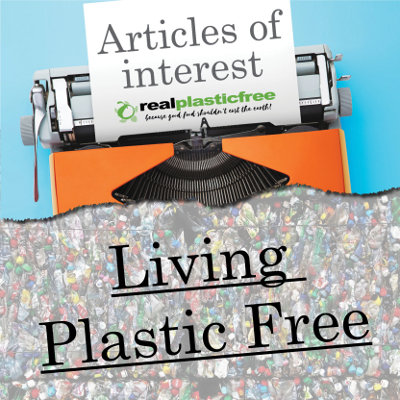
Why you should start living plastic free, how to make a start and how we can help you on your journey
So, what’s the big deal?
What is so important about living plastic free? Plastic is a big problem. More than eight million tonnes of it goes into the oceans every year. That’s around 600,000 double-decker buses. Or 250,000 Empire State Buildings being dumped in the sea year on year. Experts predict that by 2050, the amount of plastic in the ocean will weigh more than the amount of fish. Just think about that; there will be as much plastic floating around as there are fish. That’s an appalling realisation by anyone’s standards. Most importantly, it’s a real wake up call on exactly what single-use plastic is doing to the planet.
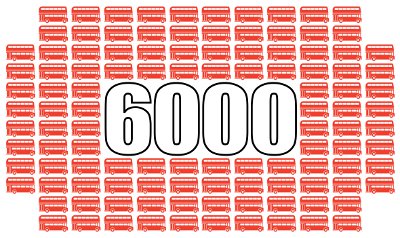
What’s the Result?
Things are already in a bad way as one-in-three sea turtles, and around 90 percent of seabirds, have ingested plastic. As a result, their stomachs become full, meaning they don’t have room for food. Each year 100,000 animals in the sea die as a result. Television coverage such as the recent Blue Planet II episode has helped to highlight the plight of ocean-based wildlife. So there has been a marked change in public opinion. Also a desire to change. Only we can make a difference and we must do it sooner rather than later. Basically, it’s time to step-up.
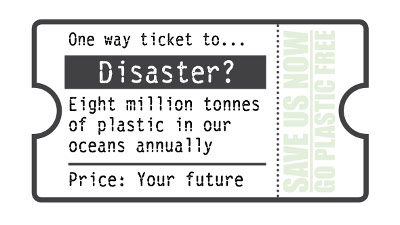
Are all plastics bad?
This is a tricky one. Plastic serves a purpose and it’s not going away any time soon. Just as a starting point it has its uses in industry, medicine and in many long-term use household items. We can’t eliminate all plastic. So should concentrate on what’s doing the most damage and what we can change.
There is a move towards bioplastics. These plastics made from renewable sources such as agricultural by-products, vegetable oils and even old, recycled plastics. However, they are expensive and currently make up less than 1 per cent of the world’s plastic market. Once the demand is there, i.e. the general public refuse to use single-use plastics and then these will become more mainstream.
And The Worst Is?
In simple terms, it’s single-use petroleum-based plastic that’s by far the worst of the bunch. This is the one thing that we can start to eliminate through people-power. They are the biggest problem mainly because of the sheer volume of these types of products. Straws, take away cups, carrier bags, food packaging and water bottles, for example, are all used once and then either thrown away or recycled.

While many plastics might have a place and justifiable uses, single-use disposable items do not. Each year, 400 million tonnes of plastic is produced and 40 per cent of that is single-use. Plastic we’ll only use once before it’s binned. And it’s really quite staggering how long plastics take to biodegrade. A plastic bottle can take up to 450 years, some larger bottles and bags can even take 1000 years! So the plastic takeaway cup that your most recent Flat White came in will still be around long after you’re gone. It’s clear to see that something needs to be done. Large-scale change will inevitably come. Some governments are moving in the right direction, but it’ll be a slow process and so it’s important that we all take small, everyday actions right now so we can start to see change.
Okay, I’m convinced. How do I make changes?
Here’s our handy guide to what you can do. Whether you’re starting out on your plastic-free journey and need some first steps or your crusade is in full swing and you want to step it up a notch read on!
There’s a large number of everyday plastic-free wins that you can do at home that take minimal effort.
Change Number One
It’s time to add an extra R to your reduce, reuse and recycle mantra – and that’s refuse.
Refuse plastic straws, refuse plastic throw-away cutlery, refuse takeaway coffee cups and refuse plastics bags. Making a stand is step one and it’s easy to do.
The most obvious is to ditch the plastic bags and invest in a stash of large cotton totes to carry your shopping. They always look chicer too so that’s a double win in our book.
Invest in a reusable coffee cup and say no to the takeaway cup. The plastic film inside a takeaway coffee cup is single use and cannot be reused. Get yourself a reusable one such as a Keep Cup and take it with you for coffee shops to fill up rather than use a one-use plastic one. Reusable coffee cups come in all kind of beautiful designs now so again, you’ll look good while you help save the planet.
If that weren’t enough, many coffee shops also offer a discount on your takeaway coffee if it’s being served in a reusable cup. Again, win-win!
The same goes for water bottles. Grab yourself a metal, reusable water carrier and put an end to those endless plastic bottles.
Change Number 2
Next step, ditch your plastic toothbrush and go for bamboo.
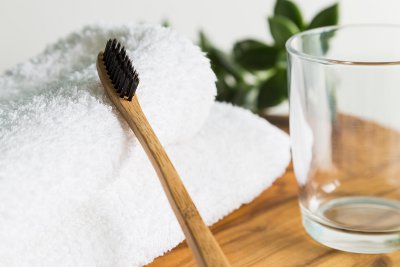
Change Number 3
Virtuous coffee lovers may have made their move towards reusable cups but the next culprit is coffee pods so they’ve got to go too. Opt for a cafetiere coffee instead, or if you really can’t go without then swap your single-use coffee capsules for recyclable ones.
Taking the next steps
Make those three changes and you’ll be a fully-fledged, no-to-plastic maverick.
Of course, now you’ve made a start, you’ll have the bug and will want to do more. We don’t blame you.
Step up your game by opting to only buy loose fruit and vegetables. They’re the easiest place to start and really, what fruit or veg was ever improved by wrapping it in plastic? Find a shop like Real Foods in Edinburgh where there are 150 fruit and vegetables for self-service at high season and you can simply take them away in your trendy tote bag without a piece of plastic in sight.
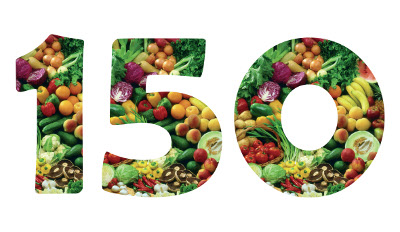
Don’t stop at apples and bananas though, shops such as Real Foods also sell loose loaves of bread, all made locally of course, which you take away in brown paper bags.
There are also plastic free shops popping up in many towns where you can take your own container and buy many different dry goods. Real Foods have been selling coffee beans and other scooping goods served into whatever container you choose for almost all of the 40 years or so they have been open on Broughton Street in Edinburgh.
Can’t get to Edinburgh? Don’t worry; Real Foods pack their dry goods in cellulose bags which are plant-based and can be safely added to your home compost – see our packaging information here.
You can buy many wonderful foods in sizes from 25g all the way to 1kg from our plastic free shop. The beauty of this is that the more you buy the less you will pay per gram!
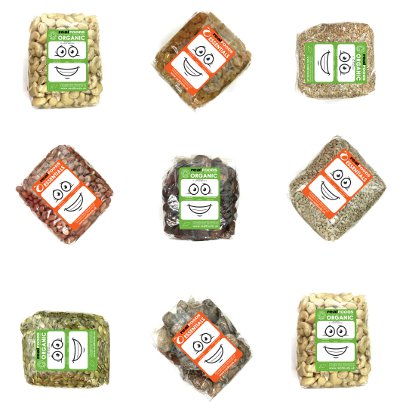
Becoming a plastic-free warrior
The environmental issues surrounding plastics are the main reason that many people are starting to move away from plastics, but there are health concerns too. Once you’re ready to banish plastic for either reason, there are a number of long-term goals that you can work towards.
Making your own
Be it growing your own fruit and vegetables, keeping chickens or simply baking all your bread and cakes at home, all of these mean zero plastic.
Making your own non-dairy milk is another great step and easy enough when it comes to almond milk.
For those items, you need to buy from the shops, make friends with your local independent shopkeeper and ask them to put your shopping in your own reusable containers.
Make a commitment to yourself to stop buying anything in plastic packaging. Once you start it becomes clear that there’s always another option.
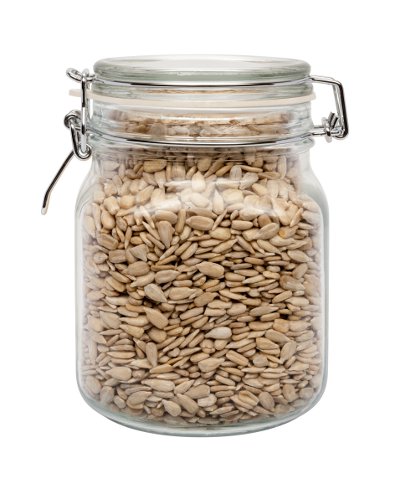
Let Real Plastic Free help
Real Plastic Free is committed to becoming a leader in this field. Building on the work that Real Foods has been doing for many years, our commitment is to reducing single-use plastic ranges. Online ordering is a plastic-free option as we use cardboard boxes and cellulose or paper packaging for wrapping. Cellulose is primarily made from wood pulp and is truly biodegradable, so you can pop all your Real Plastic Free packaging in the recycling.
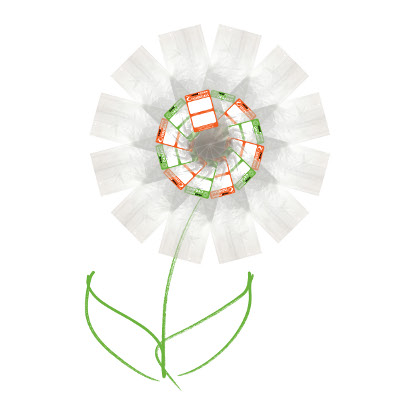
If you want to take on the challenge and need a kick-start then try The Marine Conservation Society. They set a challenge to go single-use plastic free every June. It’s another great way to start your journey towards cutting right down, but don’t let it stop you from starting right now. Once you’re on the way to cutting out single-use plastics, then you can get your family and friends on the right track too.

